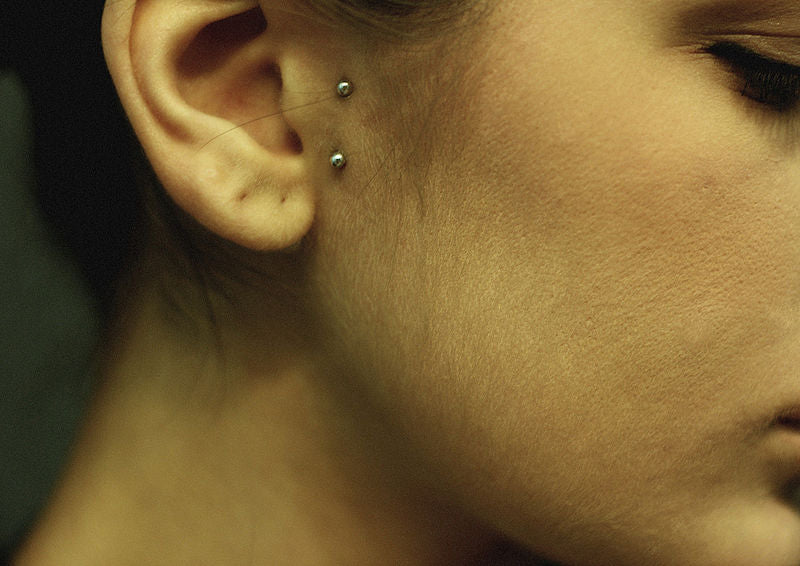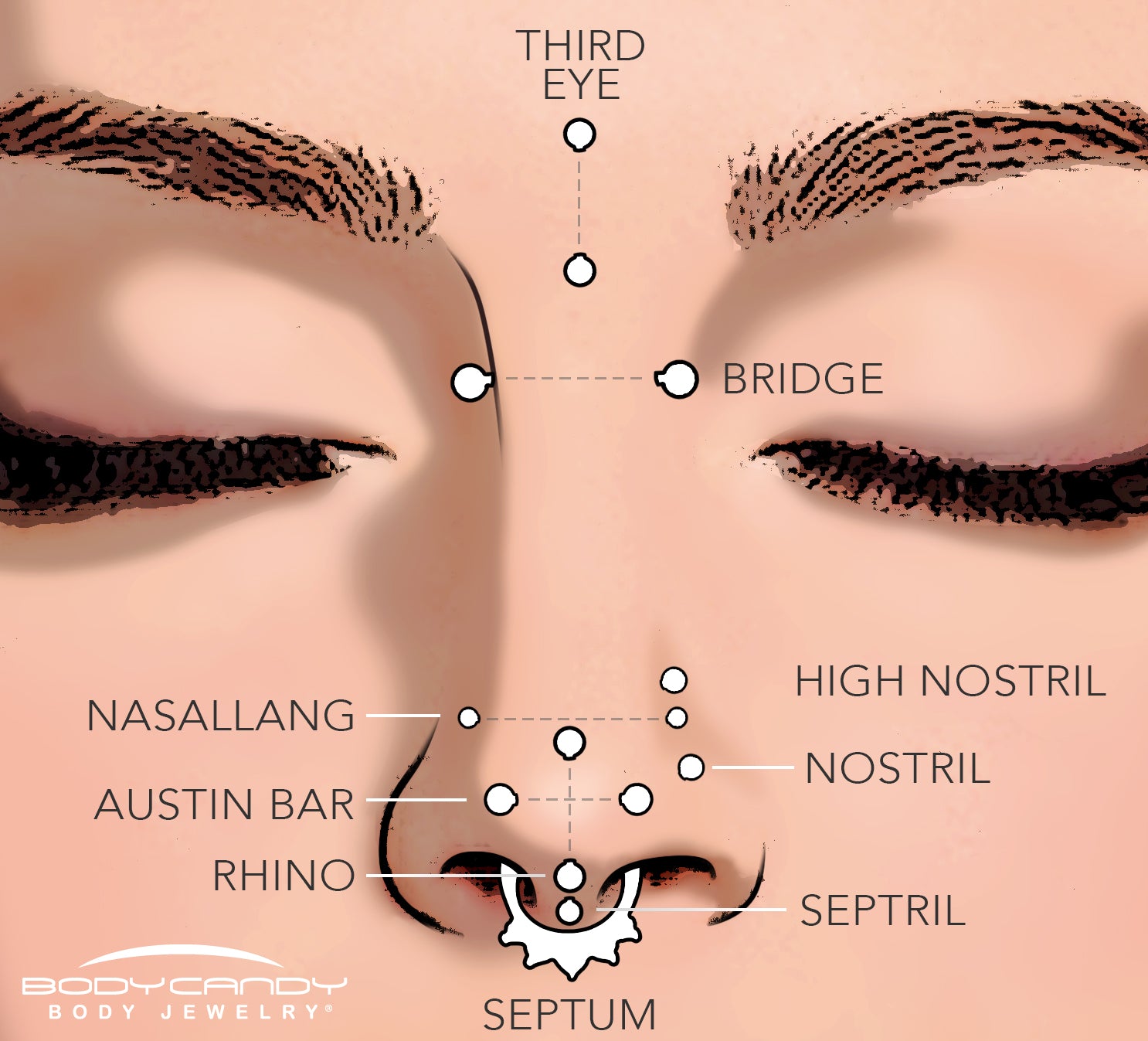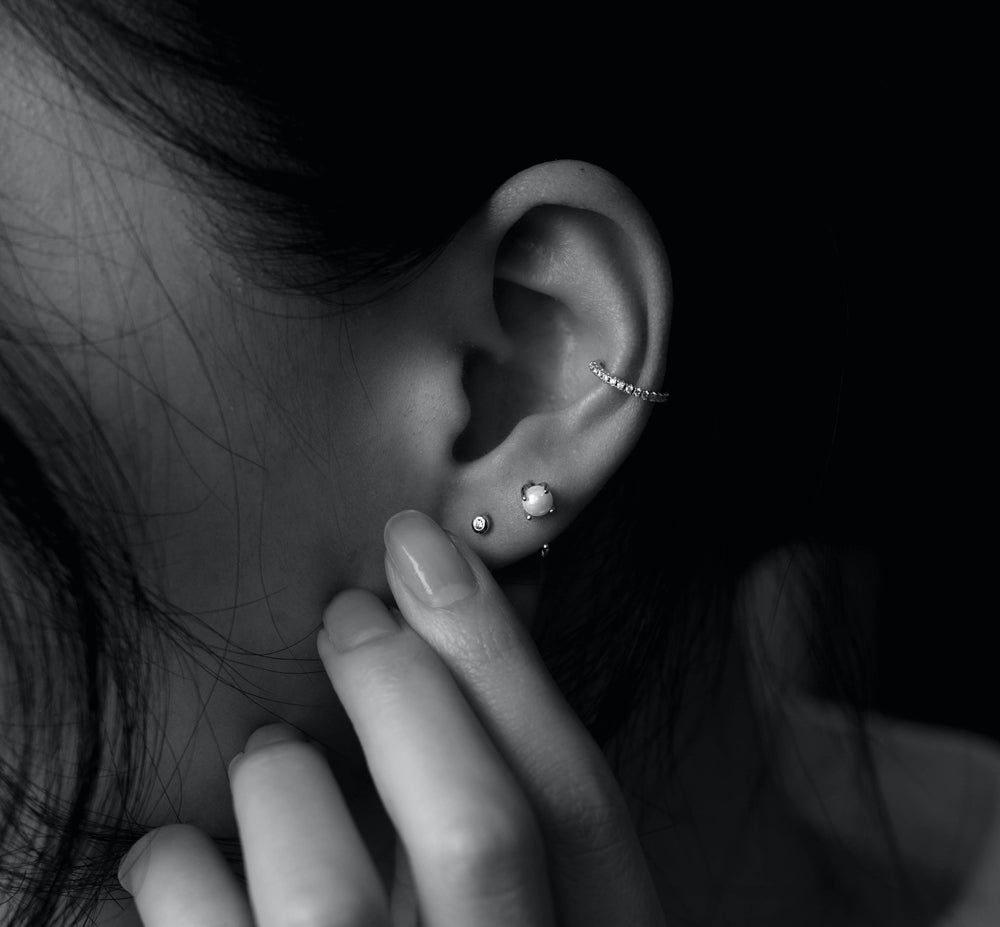If you’ve been around the piercing scene for more than a minute, you’ve probably heard the terms “subdermal”, “transdermal” and “surface piercing”. Or maybe you’ve just heard people referring to their “dermals”. Are you feeling a little confused? Not sure which is what? That’s ok because we’re here to tell you!
First there’s the subdermal implant. These are implants placed under the skin for a three-dimensional look, such as horns or various designs. Finding a piercer to do this can be tricky – many do not perform this type of body modification and you’ll definitely want it done by someone with plenty of experience. They are accomplished by cutting the skin all the way through to the subcutaneous level. Then a device is used to push the skin upwards, creating a pocket for the implant to sit in. The implants are usually made of silicone; however, some exist that are made of Teflon. After the implant is inserted, the incision is then sutured closed. Obviously, this is a pretty extreme look and not one that is easily removed in the way that a standard piercing would be. That said, it is definitely a modification that will stand out in a crowd.

A subdermal piercing is more like a combination of a standard piercing and a subdermal implant. The jewelry used is reminiscent of a labret, but with a larger and longer end than the usual disc end. A small incision is made in your skin, the base of the jewelry is inserted, and a small hole is pierced in the skin to allow the post to be accessible and connected to the other end. This gives you the look of piercing in places you wouldn’t normally be able to pierce – such as the ones seen on fingers, the clavicles, and the nape of the neck. The downside of this style of piercing is that they are often in places where it’s easy to snag the jewelry on things like hair or clothing. Subdermals can reject with little provocation and sometimes it only takes one good yank. Once the piercing begins to reject and work its way out of the skin, it can be nearly impossible to save it. If that should happen, your best option is to have it removed by your piercer. Allowing the jewelry to work its way out on its own can result in far worse scarring than having it removed.

Surface piercings are piercings that sit flat across the skin instead of going through a raised area (such as an earlobe or septum). Some of the most commonly seen surface piercings include the anti-tragus, the anti-eyebrow, and the nasal bridge or Erl piercing. Depending on the location of the piercing, some use special jewelry known as a surface bar. These are flat bars with the ends bent upwards at a ninety-degree angle. The flat bar allows the jewelry to sit more flush with your body as opposed to pushing upwards against the skin. Not all surface piercings require this, however. Some use standard jewelry styles like the curved barbell. (Did you know that navel and eyebrow piercings were types of surface piercings? Now you do!) And some surface piercings are only meant to be temporary. Corset piercings, a double row of captive bead rings that can be laced together like a corset, are almost always temporary and extremely difficult to successfully heal into permanent piercings.
Like any other types of piercings, these all need careful aftercare and a watchful eye. If you see signs of infection, a red line across the length of the piercing, or your jewelry appears to be shifting position, you need to get to a qualified piercer immediately. Of course, some piercings migrate or reject for what seems to be no reason and cannot be saved. But proper aftercare will give you the best possible chance of achieving a healed and happy piercing.
Now that you know the difference, these terms should make more sense to you. Perhaps they’ve even given you ideas for piercings of your own! Good luck and happy piercing!






